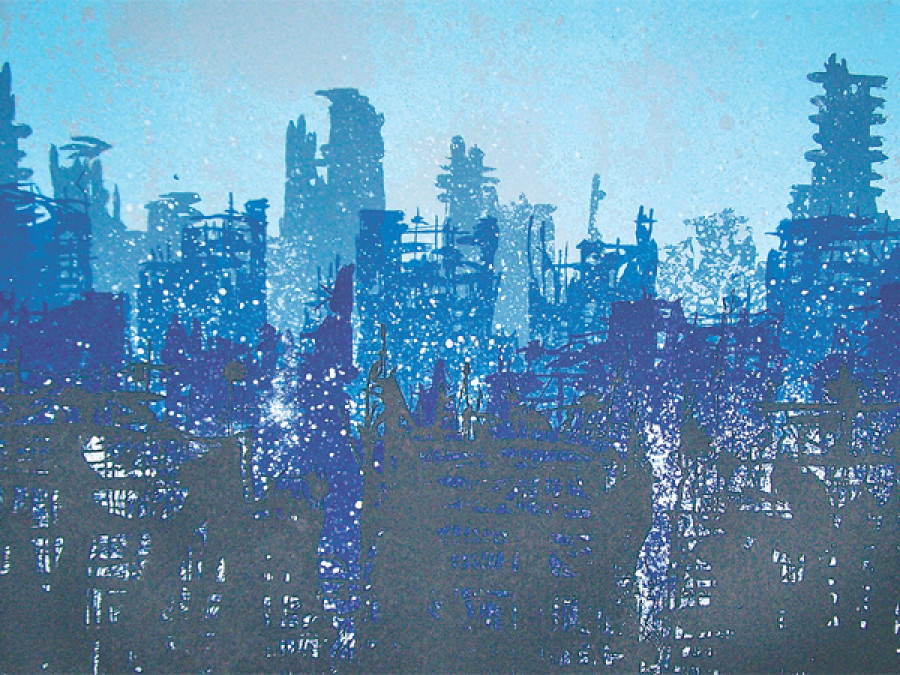Miscellaneous
Not like changing shirts
In City of Dreams, Rana’s stories are not superficial renderings of everyday Nepali life; they are animated with each character’s fear, insecurities and desire to become.
Weena Pun
Becoming is banal. It is what we do every day, in subtle ways we never notice. Becoming someone different is not about adopting a persona; it’s about never admitting to yourself that you were ever anything other than this.”
These are the lines the protagonist of the short story, The Smoker, from the collection City of Dreams, thinks about after meeting an enigmatic character named Maya on the subway in New York City. Maya, whom the protagonist cannot recall if he has met before, asks him about an identity, seemingly his, and leaves him nonplussed, pondering about what it means to become. By the end of the story, it is clear that becoming is much more confusing than these lines appear to make. Having a name is not enough to be. Neither is being a published writer of short stories under that same name. The protagonist shares his first name with the author of the collection, Pranaya SJB Rana, and also with another mysterious character in the same story. In essence, here is Pranaya writing about Pranaya who meets another Pranaya, who could be the future or imagined self of either of the two Pranayas. It is dumbfounding. Becoming is dumbfounding. But the lines, nonetheless, encapsulate the theme of the book.
Becoming stronger, becoming freer, becoming more or less religious, becoming aware or becoming stuck, and in the course of becoming, changing or rather, as the above quoted lines put it, admitting what the person always was deep down, is a recurring idea in the book. In a reductionist’s version, this fixation might seem like a cop-out, but while becoming might be banal, Rana captures its subtlety and portrays them brilliantly—the change always a few pages away but still a lovely surprise when it happens.
For instance, in the last story on the book, The Child, the protagonist, Seema, hits with her carand kills, what she wants to believe, a stray dog. But that moment, which happens in the opening paragraph, gnaws its way in and by the end of the story summons in her the courage to call her marriage what it is—a loveless, hassle-free compromise. She tells her husband that she cheated on him. He yells and cries in response, but she is adamant in her refusal to hear them. Her marriage is crumbling not because she slept with her co-worker, but because she knows it was not just a stray dog, or even a child as the title suggests, that died that night; she killed something else inside her as well. The story is about her suffering through the realisation and ultimately accepting it.
In the book, Rana is remarkable at doing this: capturing a ‘tiny’ moment, allowing it to worm its way inside a character’s psyche, and then letting it explode at the end, with monumental irreversible consequences. In another story, Dashain, the central character, Rabi, goes from becoming a doe-eyed person in love to one sickened at the cruelty affection demands. A goat is not just mutilated in his desire to win a girl over; he loses self-respect in the course as well.What remains inside where there used to be butterflies then is hollowness, which the reader feels it equally acutely.
In stories like The Child and Dashain, the moments that force a character to reconcile with who they are happen in the physical world the reader knows, as a result of which, irrespective of the fine execution, some might say, “Seen that, done that, read that”. Where Rana really shines then is in stories like City of
Dreams and The Presence of God, in which the elements of change come from a surreal world, real but not real, relatable but alien—in moments where Rana infuses a dose of magic in realism.
In The Presence of God, for instance, a bickering couple and their two friends, married to each other, hike up the Shivapuri hill only to discover a world incomprehensible to all of them. As they follow a man to a village beyond the hill, they realise the emptiness of the place is misleading. The village awakes at night, with creatures not of this world, devouring cows, goats and buffaloes alive. This scene, while it shakes the characters to their core, takes the reader one step deeper into the meaning of escapism intrinsic to hiking. For most people in Kathmandu, walking up the hill to Shivapuri is about getting away, getting inside and feeling fresh. They go up and they descend, hoping that the intense physical exhaustion puts them in touch with something inexplicable inside. In this story, however, the walk goes beyond and the inexplicable takes a bizarre form—frightening for the characters, but refreshing to the reader.
Most Nepali writers writing in English, like other ‘ethnic’ writers worldwide, have had to scream, while they write. It is understandable. Nepal is rarely a setting for stories in English and its people their characters. And while humanity is the same everywhere, cultural nuances do make a difference in how it manifests. As a result, ethnic writers often face the challenge of writing about a country/culture the world does not know. And sometimes, they solve this challenge by sacrificing stories and writing as if they are saying, “Look, this is my country. This is my culture. This is who we are.” Except in very few throwaway lines, Rana does not do that. His stories are set in Nepal, but they are not uniquely Nepali. His characters are not caricatures; they are layered and deeply flawed. And his stories are not superficial renderings of everyday Nepali life; they are animated with each character’s fear, insecurities and desire to become.




 5.47°C Kathmandu
5.47°C Kathmandu










